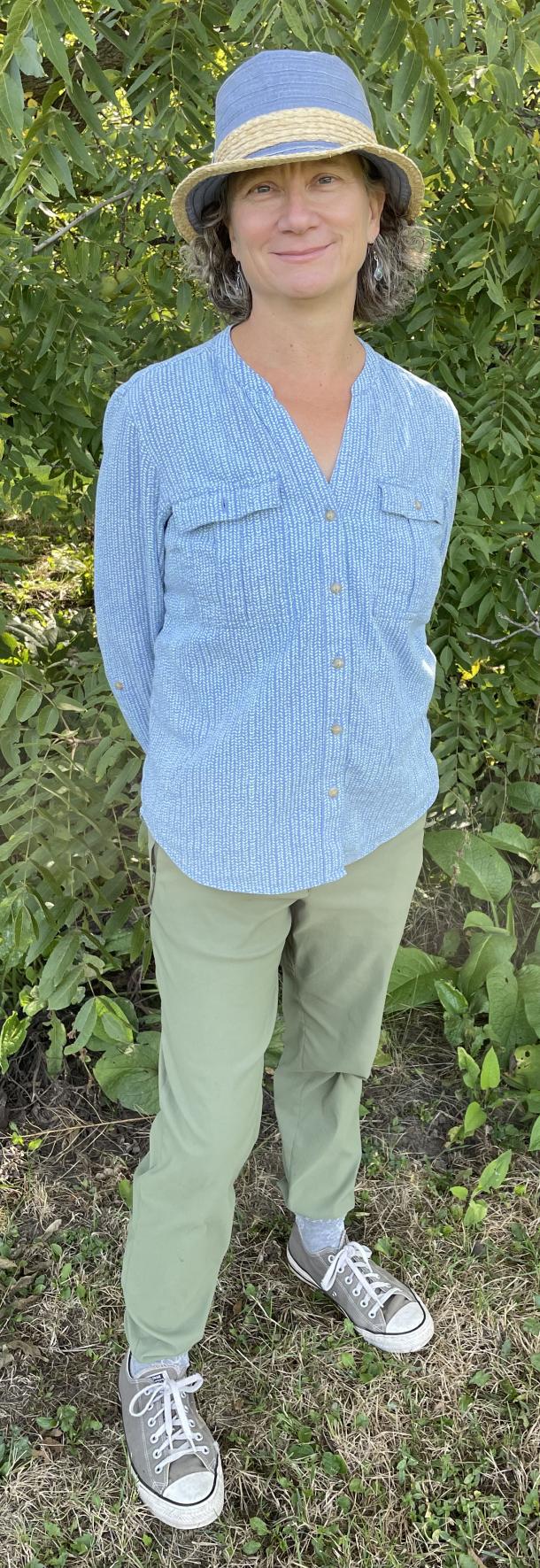Spending mindful time in the company of trees is referred to by some as Shinrin Yoku, a Japanese term which translates as “forest bathing” and a practice that is gaining traction among health care professionals and the wider public.
Andrea Prazmowski, Ottawa’s first certified nature and forest therapy guide, is leading a free webinar at The Royal on the topic of forest therapy and mental health on September 21.
Prazmowski, who’s been camping, canoeing, and hiking since she was a child, says being outdoors always felt like a healing time but about 15 years ago she started wondering if there was a way she could share “the magic of the forest” with others. In 2017, she was certified by the Association of Nature and Forest Therapy (ANFT) and began hosting therapeutic walks in the woods, many of which take place at the Dominion Arboretum and Stony Swamp.
Prazmowski, who has led guided walks in the past with both staff and clients at The Royal, encourages people to put down their devices and take a nature break, just to see how it feels.
“I don't think we fully understand how integral it is to be close to trees and hear birdsong,” she says. “It's only in very recent history that we've moved indoors and plugged in, but for most of our evolution we’ve lived outdoors more closely connected to nature.”
So, what are the benefits of forest therapy from a mental health perspective?
“There’s tons of research and lots of people studying the question,” says Prazmowski. “What they're finding is that spending time in natural settings – where we're focused on nature – reduces our stress hormones and blood pressure and boosts our immune systems.”
Prazmowski is quick to point out that forest therapy does not require spending hours in the deep woods. Lingering in parks and other natural settings, gardening, and birdwatching are all activities that benefit our health and wellness. Prazmowski says the trick is to slow down and engage all our senses: look, listen, touch, and breathe deeply.
Prazmowski says people report that spending time in nature decreases rumination, boosts mood, creativity, and collaboration, and can even have an impact on one’s experience of pain. She describes a study that involved people recovering from surgery in a hospital: Patients who had a view of a natural setting out their window were discharged sooner and needed less pain medication than those who recovered in similar rooms with a view of a brick wall.
Prazmowski’s guided walks are designed to shift busy brains from a state of stress to one of “rest, healing, and creativity” and awaken the senses by tuning into the present moment. This is primarily done through gentle prompts by the host. During a guided forest walk, participants might be invited to walk very slowly and notice movement around them (such as leaves blowing in the wind) or pay close attention to the feeling of the earth under their feet. Prazmowski says something as simple as leaning on a tree and touching the bark can help us reconnect with our bodies. Many participants discover an increased sense of “awe and gratitude” during a guided forest walk.
Forest therapy is ultimately about focusing on our sensory experience to rest our “chattering minds,” as Prazmowski calls them. While there is research that shows time spent in nature has all kinds of benefits, Prazmowski points out “there are things we can measure and things that we can't measure and sometimes have trouble putting words to, and they both happen for people, and they're both important.”
In her upcoming webinar at The Royal, Prazmowski will share research findings and best practices gleaned from her own experience. She hopes the session will ultimately inspire people to take what they’ve learned and go for their own walk in the woods, and as a result, remember how good it feels to be out there.
“A big part of forest therapy is about reconnecting. I hope people remember that we are a part of nature.”
To register for this webinar, go to theroyal.ca/events/forest-therapy-and-your-mental-health.

